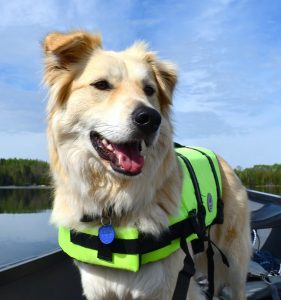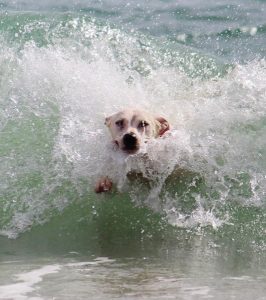PETS & ANIMALS — Summer is almost here, and that means you’re probably spending a lot more time outdoors with your dog. Swimming is great exercise, especially for older or overweight dogs, and it can be a lot of fun for both owner and pet. Whether you’re taking a dip in the pool or enjoying some leisurely beach time, it’s important to keep your dog safe when they’re in or around the water.
There are many different ways that dogs can get into trouble in the water, from currents and riptides to snakes to dangerous algae, so it’s important that we always keep an eye on our pets when they’re out having fun in the sun.
Here are some tips for keeping your canine companion safe and happy during summer fun.
Canine Life Vests
The canine life vest is a great investment for your dog. Find a quality vest that fits properly and is comfortable for your dog. The canine life vest is designed specifically for dogs, and will not hinder movement. It is available in different sizes and models to perfectly fit your dog’s body type. The vest can be easily adjusted with Velcro straps and buckles, so that it fits comfortably yet securely. You can use the handle on top of the canine life vest to help guide or retrieve your pet from any dangerous situation as well! The first step is to take your dog’s measurements. We recommend measuring the widest point of their chest, as well as around their broadest part of their torso.
Snakes in the Water
Water can be a dangerous place for dogs if there are snakes around. Snakes can be aggressive hunters with a built-in defense mechanism, such as releasing a foul-smelling musk that can deter predators. Although you may want to save your pet from harm, an encounter with a water moccasin or copperhead could be fatal. While your chances of running into one of these snake while swimming or boating are slim, it is good to know what they look like, how they behave and what you can do if you find yourself face-to-face with one.
Currents and Riptides
Riptides are powerful currents that flow rapidly away from shore. They can pull swimmers and surfers (and dogs!) out to sea. Riptides can be difficult to spot because they are not always obvious, but they can be identified by the water being discolored or moving in a circular motion.
Riptides may form without warning, so it is important to be aware of this danger when going into the ocean. Dogs should never be allowed to swim alone. If a dog does get swept away by a riptide or current, it will likely panic and become exhausted quickly. A leash and/or a life vest can help keep your dog safe by giving you better control if an emergency situation arises.
If your dog does get caught in a riptide, the first thing that you should do is try to get as close as possible to your dog, but without getting caught in the riptide yourself. The reason for this is because it will be easier for you to reel them in with a leash and harness rather than trying to swim and get him or her back on land. If you cannot reach them, then you should throw an object such as a stick or ball with rope attached that they can grab onto and pull them towards shore.
Algae (AKA Cyanobacteria)
Algae are common in ponds, lakes and rivers. They can cause skin irritations, gastrointestinal distress and even death. Algae, often called blue-green algae or cyanobacteria, is a type of bacteria that flourishes in warm, sunlit water. When it accumulates, it forms “blooms” which can be seen as green or blue patches on the surface of the water. The blooms may also be brownish or even red in color.
In dogs, ingestion of algae can result in vomiting, diarrhea and lethargy. If your dog has been exposed to algae and shows any signs of illness, contact your veterinarian immediately.
In case you missed it: Pet Owners Beware: Toxic Algae Bloom Hitting Area Lakes







